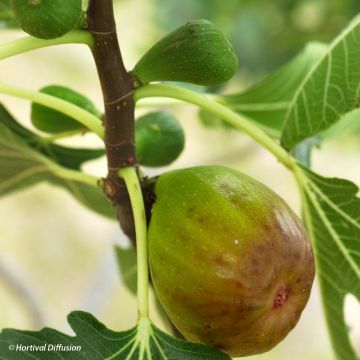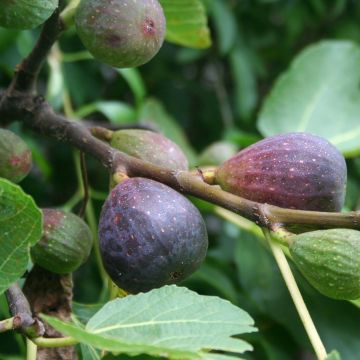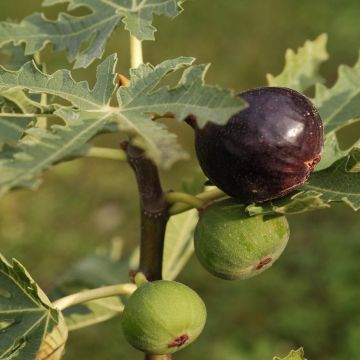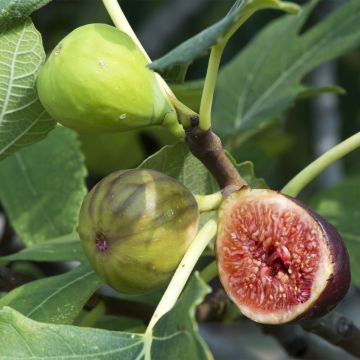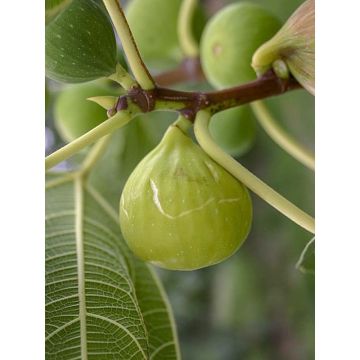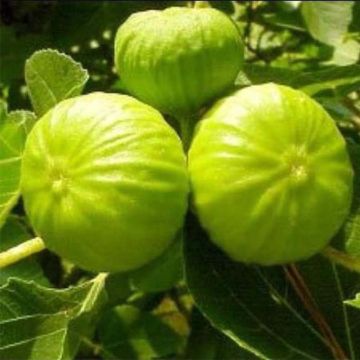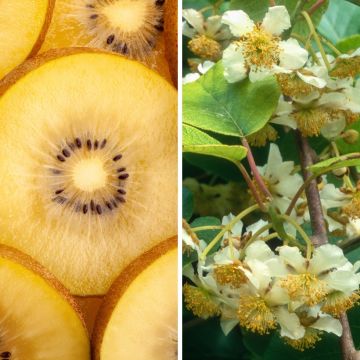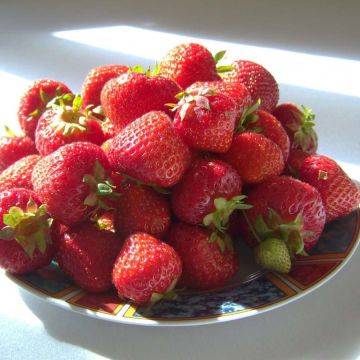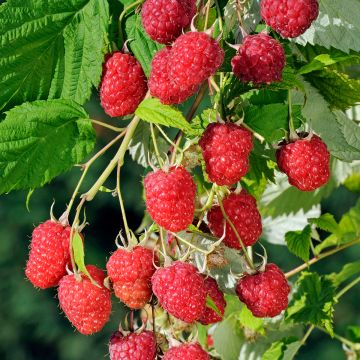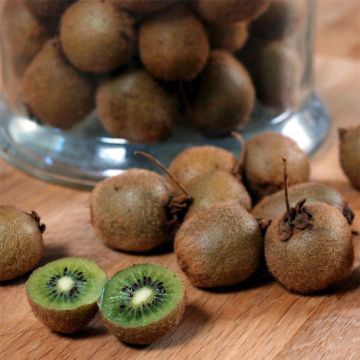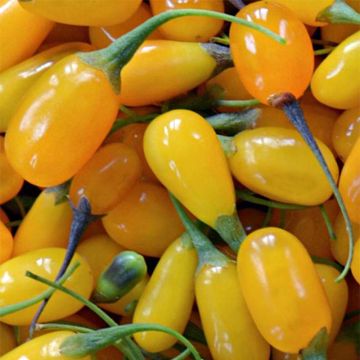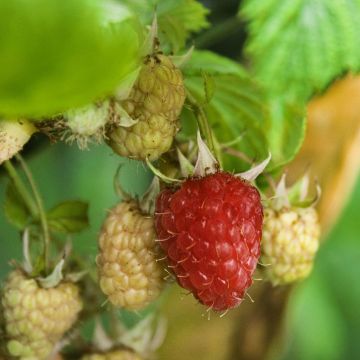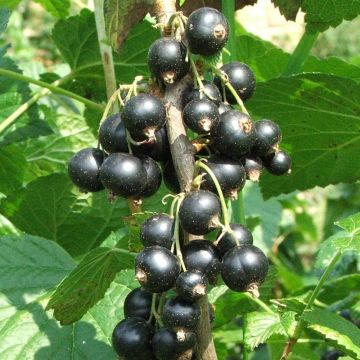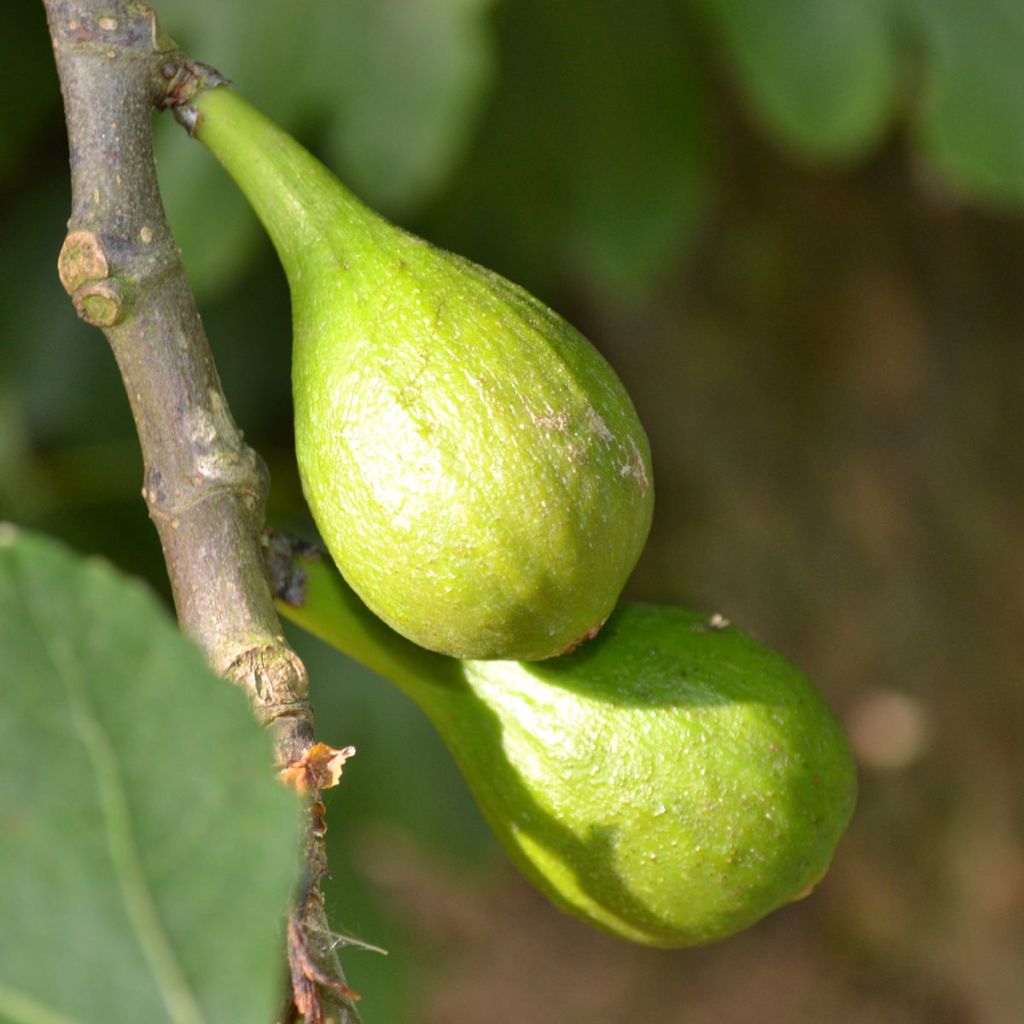

Fig Tree Kadota - Ficus carica
Fig Tree Kadota - Ficus carica
Ficus carica Kadota
Common Fig, Fig Tree
What a shame! I received it alright and carelessly forgot about it for two days in the blazing sun without water. It's still quite pretty though, it has lost all its leaves but is showing a series of big, healthy green buds that breathe spring.
Fabien, 18/10/2019
Special offer!
Receive a €20 voucher for any order over €90 (excluding delivery costs, credit notes, and plastic-free options)!
1- Add your favorite plants to your cart.
2- Once you have reached €90, confirm your order (you can even choose the delivery date!).
3- As soon as your order is shipped, you will receive an email containing your voucher code, valid for 3 months (90 days).
Your voucher is unique and can only be used once, for any order with a minimum value of €20, excluding delivery costs.
Can be combined with other current offers, non-divisible and non-refundable.
Home or relay delivery (depending on size and destination)
Schedule delivery date,
and select date in basket
This plant carries a 6 months recovery warranty
More information
We guarantee the quality of our plants for a full growing cycle, and will replace at our expense any plant that fails to recover under normal climatic and planting conditions.

Description
The Kadota Fig Tree is a self-fertile variety that produces yellow-green fruits with sweet and tasty white flesh. It is a biferous variety, meaning it bears fruit twice, in June-July and then in September-October. The Fig Tree is a deciduous, hardy tree that thrives in sunny conditions. Plant in autumn-winter, frost-free (or in spring for colder regions).
Originally from Turkey and Asia Minor, the Fig Tree (Ficus carica) belongs to the Moraceae family. It is a small, vigorous, rounded and erect tree, with a trunk often twisted, reaching 3 to 5 m (10 to 16ft) in all directions.
There are distinguishable unifera varieties, which produce one harvest per year, and bifera varieties, which bear fruit twice a year. The 'Kadota' Fig Tree is a bifera variety, producing:
- figs called 'flower figs' in June-July, appearing on the previous year's wood, quite fleshy (100 to 120g)
- autumn figs, round and slightly smaller, from mid-August to October depending on the region (70 to 80g)
The 'Kadota' variety is cold-resistant and parthenocarpic (fruits obtained without fertilisation), it does not require the intervention of the blastophagus, the only pollinating insect of the fig tree, which is too sensitive to survive in cold climates, to bear fruit.
The figs are green and then turn golden at ripeness, pear-shaped and fleshy for the summer fig, more rounded for the autumn fig. The leaves are rough, dark green turning yellow in autumn, finely velvety, relatively large (sometimes 20 cm (8in) long) and have a long petiole. The lamina is deeply divided into three to seven lobes, usually five, of variable shape, with a velvety underside and prominent veins. The wood is soft and spongy, the bark is grey and smooth. The root system of this small tree is powerful, spreading in all directions.
The figs should be harvested multiple times, as they need to be picked as they ripen and consumed fairly quickly. Refrigeration is not recommended as it alters the flavours of the fig and the skin may suffer from humidity and condensation. The best way to consume them is fresh from the tree, preserving their honey-like fragrance. Figs are also used in sweet dishes (pies, clafoutis, compotes etc.) or savory dishes in combination with goat cheese, dry-cured ham or foie gras.
The fig tree enchants with the beauty of its branches and the quality of its fruit. It is undoubtedly one of the most beautiful fruit trees. The dark green of its foliage, the shape and size of its leaves also make it a wonderful haven of freshness during the summer heat. Plant it against a wall to protect it from the cold during harsh winters, with a south or southwest exposure, alongside the Pomegranate Tree, the White Mulberry, and the Japanese Medlar in the southern half of our country. In the north, it can be associated with the quince tree, the Akebia quinata, and the Feijoa, which are also hardy and exotic. Take into account its dimensions when fully grown to determine the distance at which you will plant it. Although the roots do not cause damage to modern constructions, they can damage walls made of dry stones or weak mortars, in the old-fashioned way.
Report an error about the product description
Plant habit
Fruit
Flowering
Foliage
Botanical data
Ficus
carica
Kadota
Moraceae
Common Fig, Fig Tree
Cultivar or hybrid
Other Fig trees
View all →Planting and care
The Fig tree adapts to all types of soil, even poor, rocky and dry, or even rocky soil, but prefers deep, loose soil with a sufficiently high limestone content. For good fruiting, it requires a sunny and sheltered exposure from strong winds (South or Southwest), especially in northern regions. In summary, the fig tree likes to have its feet in the shade and its head in the sun, especially during fruit ripening in summer. At the time of planting, install a layer of gravel at the bottom of the planting hole and add a mixture of garden soil and mature compost or topsoil.
During the first two years following planting, it will be necessary to ensure that it does not lack water, especially in summer, as its root system, although capable of drawing water deeply from the soil, is not sufficiently developed. It is not well adapted to montane climates, where its success is a challenge. It can be planted from November to the end of March, outside of freezing periods. In colder regions, it is preferable to plant early in spring. It is a hardy tree, even if the aboveground parts can be destroyed by cold (young branches from -15-17°C (5-62.6°F), flower buds from -10-12°C (14-53.6°F)), it will resprout from the stump until -20°C (-4°F).
The Fig tree is not very susceptible to diseases and pests. The use of a special fig tree fertiliser will be beneficial for productivity.
Planting period
Intended location
Care
-
, onOrder confirmed
Reply from on Promesse de fleurs
Similar products
Haven't found what you were looking for?
Hardiness is the lowest winter temperature a plant can endure without suffering serious damage or even dying. However, hardiness is affected by location (a sheltered area, such as a patio), protection (winter cover) and soil type (hardiness is improved by well-drained soil).

Photo Sharing Terms & Conditions
In order to encourage gardeners to interact and share their experiences, Promesse de fleurs offers various media enabling content to be uploaded onto its Site - in particular via the ‘Photo sharing’ module.
The User agrees to refrain from:
- Posting any content that is illegal, prejudicial, insulting, racist, inciteful to hatred, revisionist, contrary to public decency, that infringes on privacy or on the privacy rights of third parties, in particular the publicity rights of persons and goods, intellectual property rights, or the right to privacy.
- Submitting content on behalf of a third party;
- Impersonate the identity of a third party and/or publish any personal information about a third party;
In general, the User undertakes to refrain from any unethical behaviour.
All Content (in particular text, comments, files, images, photos, videos, creative works, etc.), which may be subject to property or intellectual property rights, image or other private rights, shall remain the property of the User, subject to the limited rights granted by the terms of the licence granted by Promesse de fleurs as stated below. Users are at liberty to publish or not to publish such Content on the Site, notably via the ‘Photo Sharing’ facility, and accept that this Content shall be made public and freely accessible, notably on the Internet.
Users further acknowledge, undertake to have ,and guarantee that they hold all necessary rights and permissions to publish such material on the Site, in particular with regard to the legislation in force pertaining to any privacy, property, intellectual property, image, or contractual rights, or rights of any other nature. By publishing such Content on the Site, Users acknowledge accepting full liability as publishers of the Content within the meaning of the law, and grant Promesse de fleurs, free of charge, an inclusive, worldwide licence for the said Content for the entire duration of its publication, including all reproduction, representation, up/downloading, displaying, performing, transmission, and storage rights.
Users also grant permission for their name to be linked to the Content and accept that this link may not always be made available.
By engaging in posting material, Users consent to their Content becoming automatically accessible on the Internet, in particular on other sites and/or blogs and/or web pages of the Promesse de fleurs site, including in particular social pages and the Promesse de fleurs catalogue.
Users may secure the removal of entrusted content free of charge by issuing a simple request via our contact form.
The flowering period indicated on our website applies to countries and regions located in USDA zone 8 (France, the United Kingdom, Ireland, the Netherlands, etc.)
It will vary according to where you live:
- In zones 9 to 10 (Italy, Spain, Greece, etc.), flowering will occur about 2 to 4 weeks earlier.
- In zones 6 to 7 (Germany, Poland, Slovenia, and lower mountainous regions), flowering will be delayed by 2 to 3 weeks.
- In zone 5 (Central Europe, Scandinavia), blooming will be delayed by 3 to 5 weeks.
In temperate climates, pruning of spring-flowering shrubs (forsythia, spireas, etc.) should be done just after flowering.
Pruning of summer-flowering shrubs (Indian Lilac, Perovskia, etc.) can be done in winter or spring.
In cold regions as well as with frost-sensitive plants, avoid pruning too early when severe frosts may still occur.
The planting period indicated on our website applies to countries and regions located in USDA zone 8 (France, United Kingdom, Ireland, Netherlands).
It will vary according to where you live:
- In Mediterranean zones (Marseille, Madrid, Milan, etc.), autumn and winter are the best planting periods.
- In continental zones (Strasbourg, Munich, Vienna, etc.), delay planting by 2 to 3 weeks in spring and bring it forward by 2 to 4 weeks in autumn.
- In mountainous regions (the Alps, Pyrenees, Carpathians, etc.), it is best to plant in late spring (May-June) or late summer (August-September).
The harvesting period indicated on our website applies to countries and regions in USDA zone 8 (France, England, Ireland, the Netherlands).
In colder areas (Scandinavia, Poland, Austria...) fruit and vegetable harvests are likely to be delayed by 3-4 weeks.
In warmer areas (Italy, Spain, Greece, etc.), harvesting will probably take place earlier, depending on weather conditions.
The sowing periods indicated on our website apply to countries and regions within USDA Zone 8 (France, UK, Ireland, Netherlands).
In colder areas (Scandinavia, Poland, Austria...), delay any outdoor sowing by 3-4 weeks, or sow under glass.
In warmer climes (Italy, Spain, Greece, etc.), bring outdoor sowing forward by a few weeks.

































